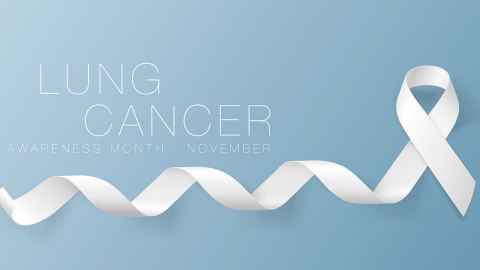Digital help for lung cancer patients
26 November 2020
Opinion: In Lung Cancer Awareness Month Kelly Burrowes explains how creating a computer-based replica of a person could help treat NZ’s biggest cancer killer.

One billion people. This is the number of people predicted to die as a result of tobacco use this century. Some more statistics: more than 7000, the number of chemicals inhaled when smoking a cigarette, many of them known carcinogens and other toxic chemicals.
One in ten. This is the number of deaths worldwide that are caused as a result of tobacco products - one in every 10 deaths in the world can be attributed to tobacco products. Every part of your body is affected by smoking cigarettes, but despite these astounding facts, there is still a substantial number of people around the world who smoke.
In China about 52 percent of adult men smoke, and in the USA, around 14 percent of adults. In New Zealand, around 12.5 percent of adults are current smokers, but rates are as high as 31 percent among Māori. New Zealand is aiming for a Smokefree Aotearoa by 2025, meaning a smoking prevalence of 5 percent or less by 2025. While smoking rates are slowly reducing, we are not on target to achieve this.
The most common and well-known impact of smoking is lung cancer, and this month (November) is Lung Cancer Awareness Month. Lung cancer is the fifth most common type of cancer in New Zealand but is the leading cause of cancer death with more than 1600 deaths per year. The majority of lung cancer patients (80-90 percent) have a history of smoking. Lung cancer is broadly classified into either non-small cell lung cancer (NSCLC), which is the most common and occurs in around 85 percent of cases, and small-cell lung cancer (SCLC).
Treatment options for lung cancer include surgery, radiation therapy, chemotherapy, targeted drug therapy and immunotherapy. Lung cancer patients in New Zealand have poorer survival outcomes compared to patients in similar countries, due in part to conservative treatment strategies. The five-year survival rate in New Zealand, based on data from 2010-14, was 15.5 percent, compared with 21.7 percent in Canada and 21.4 percent in Australia.
Radiation therapy (RT) is a common method of treatment that works by applying high energy radiation to kill cancer cells. Unfortunately, it also damages surrounding healthy tissue and reduces the ability of the lung to function in those regions. As a treatment it presents a trade-off between treating the cancer and retaining enough healthy lung for a patient’s lungs to function after treatment. This is tricky, because of the fact that most lung cancer patients are or have been smokers and often have other areas of damage in their lungs, which means they often already have reduced lung function.
Because of the risk of this further damage some patients are not treated with strong enough RT to provide a curative treatment (this is the conservative treatment mentioned earlier). At the moment, this decision is typically a ‘best-guess’ estimate based on the knowledge of the doctor deciding on the treatment and who often errs on the side of caution.
At the Auckland Bioengineering Institute (ABI) we are working on improving this decision-making. We are working towards creating a digital health platform that can help doctors decide how best to treat their lung cancer patients with RT. This will involve state-of-the-art magnetic resonance imaging (MRI) and computational modelling to develop a more personalised picture of treatment outcomes.
In this approach, we use mathematics, physics, biology, medical imaging and computers to create what has now been termed a ‘digital twin’. A digital twin is a virtual or computer-based replica of a person that looks and behaves like that person. We can, in theory, virtually apply a given patient’s treatment to their virtual twin and determine the most likely outcomes on their lungs.
In the work we are doing, we develop computational models of patient’s lungs before and after RT. We can develop lung models that simulate a given patient’s lung function and we can align the RT dose map with the models. Our work so far has shown that our model-based predictions of airflow - within the radiation region - provide a very good prediction of how well a patient’s lungs will function after their RT treatment. This improves on current estimates of a patient’s lung function after RT treatment.
By developing this digital health platform, we hope to improve the decision making around which patients can be treated (safely) with RT. We aim to improve the rates of curative intervention, minimise damage to healthy lung tissue when treating this disease and increasing the patient’s chances of survival.
Dr Kelly Burrowes is a Senior Research Fellow at the Auckland Bioengineering Institute.
This article reflects the opinion of the author and not necessarily the views of the University of Auckland.
Used with permission from Newsroom Digital help for lung cancer patients 26 November 2020.
Media queries
Alison Sims | Research Communications Editor
DDI 09 923 4953
Mob 021 249 0089
Email alison.sims@auckland.ac.nz